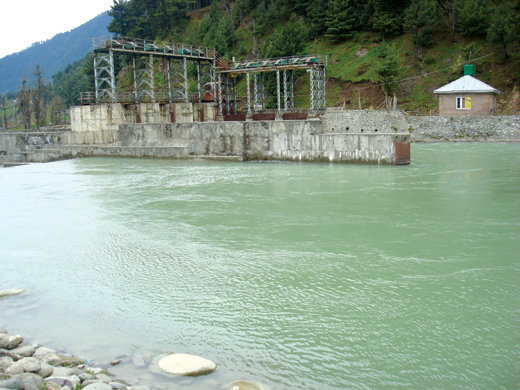Ecological considerations slowed down Pahalgam mini power project for long, now that two units are up and running the PDC is adding up a third one. Sameer Yasir reports.

Housed on the right banks of the stunning Lidder Nalla at an elevation of 2130 meters above mean sea level, the Pahalgam mini hydel project has two units of 1.5 MW each. The implementation of the project took a long time mainly for reasons of ecology and unsavoury situation. It was commissioned on June 1, 2005, almost 20 years after the work had started in 1985. When the civil works were almost complete, especially creating a canal that would join East and West Lidder streams, work was stopped over ecological concerns.
Apprehensions of West Lidder waters polluting the East Lidder and creating problems for the tourist destination were raised. As a result, the idea of connecting the two parallel streams was abandoned. Then it was decided that the two channels of the rivulet, a tributary of Jhelum, should be permitted to run parallel to each other. The power station is run by the discharge from West Lidder only. The project was revised twice first in 1989, then in 1992. Later, the eruption of armed militancy impacted the implementation of the project.
Some machinery that VA Tech Hydro (the company that had bagged the initial contract of the project on a turnkey basis) had supplied remained at the station for a long time. Part of it was found rusted when the work resumed on the project in 2002. Power Development Corporation had to seek fresh tenders for the remaining work. Most of the civil works that were earlier carried out by JKPCC and left incomplete was taken up by a private contractor, M & Co, a south Kashmir construction firm. It included the canal diversion weirs and the 1375-meter water channel, the inverted siphon and the forebay.
When the project finally started generating electricity, it had already consumed Rs 56.90 crore. It continues to run in isolation supplying energy to the tourist destination and some adjoining villages. The grid is far away and linking the two would cost a lot of money.
Now the PDC is in fast-forward mode to add the third unit. Work began after the contract was bagged by Faridabad-based Boom Systems Pvt. Ltd. The third 1.5 MW unit is expected to be ready by April 2014 at an overall investment of Rs 6 crore. Since the power station’s penstocks have a low head – around 25 meters, it requires a lot of water to run its turbines. For generating one MW of electricity, it consumes more than 162 cusecs of water which means every unit needs a flow of more than 243 cusecs.
The power station faces water scarcity in winter. During summers it runs to full capacity but in winters its generation drops to around 600 kilowatts because feeding canals lack discharge. Engineers say if both the Lidder channels are joined, it might have enough discharge to have better generation both in winter and summer. The diversion weir on the west Lidder is almost ready, the canal is 70 per cent complete. The project is currently managed by around 40 people.
SERC has put its cost at Rs 55.21 crores and its tariff at Rs 5.61 per unit. The project generated 78.78 lakh units in 2010-11 and 78.09 lakh units in 2011-12.















